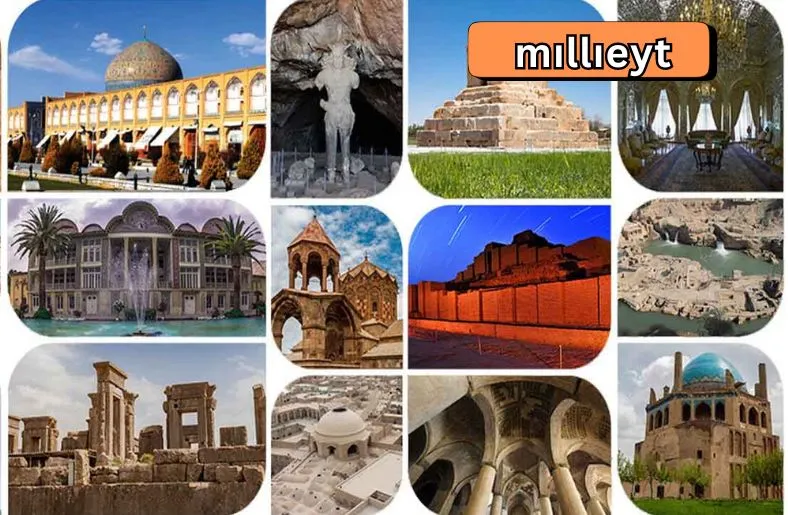Introduction
Mıllıeyt is a term that goes beyond mere words. It stands for the collective identity and shared traditions of a community. Rooted in ancient customs, Mıllıeyt reflects the essence of cultural heritage. Understanding Mıllıeyt helps us appreciate the deep connections people have with their history and identity.
In today’s fast-changing world, Mıllıeyt is more important than ever. It represents how communities stay connected to their past while adapting to the present. This term shows us how traditions are passed down through generations, keeping cultural values alive.
By exploring Mıllıeyt, we gain insight into the ways people celebrate and preserve their heritage. It highlights the role of cultural practices in maintaining a sense of belonging. In this blog post, we will dive deep into the meaning and impact of Mıllıeyt. We will see how it shapes communities and faces challenges in a globalized world.
Historical Roots of Mıllıeyt
The history of Mıllıeyt is rich and complex. It starts from ancient times when people first began to form communities. Early societies created customs and traditions that defined their way of life. These early practices laid the foundation for what we now call Mıllıeyt.
As civilizations grew and evolved, so did Mıllıeyt. Migrations, conquests, and cultural exchanges influenced how Mıllıeyt developed. Each new group brought its own customs and beliefs, adding layers to this cultural concept. This mix of traditions helped shape the unique identity of different communities.
In medieval times, Mıllıeyt became more organized. Communities began to establish formal practices to preserve their cultural heritage. This included recording traditions, celebrating festivals, and passing down stories from one generation to the next. These efforts ensured that Mıllıeyt remained strong, even as societies changed.
The rise of globalization brought new challenges to Mıllıeyt. As the world became more interconnected, traditional practices faced pressure. However, despite these challenges, Mıllıeyt has continued to evolve. It adapts to modern influences while maintaining its core values. Today, Mıllıeyt stands as a testament to the resilience of cultural heritage.
Understanding the historical roots of Mıllıeyt helps us see how it connects the past to the present. It shows how traditions have been preserved and adapted over time. This deep connection to history highlights the importance of Mıllıeyt in our lives today.
Cultural Significance of Mıllıeyt
Mıllıeyt holds deep cultural significance for communities around the world. It represents more than just traditions; it is the heart of cultural identity. This concept brings people together, creating a shared sense of belonging and pride. Through Mıllıeyt, communities preserve their unique customs, languages, and art forms. This helps them maintain a strong cultural identity amid changing times.
Festivals and celebrations are a big part of Mıllıeyt. They showcase traditional music, dances, and cuisine. These events allow people to connect with their heritage and share it with others. In this way, Mıllıeyt keeps old customs alive and introduces them to new generations. It also acts as a bridge, connecting different cultures through shared experiences.
Art and literature also reflect the cultural significance of it. Traditional crafts and storytelling pass down values and beliefs. This creative expression preserves the essence of a community’s heritage. Whether through paintings, sculptures, or folklore, it keeps the history and values of a culture vibrant and visible.
Moreover, Mıllıeyt fosters social cohesion. It strengthens family bonds and community ties by bringing people together. By participating in shared customs and rituals, individuals feel a deeper connection to their roots. This unity is crucial for building a supportive and resilient community.
In summary, Mıllıeyt is vital for preserving and celebrating cultural heritage. It enriches lives by maintaining traditions and fostering a sense of belonging. By understanding its cultural significance, we can better appreciate and support the diverse traditions that make up our world.
Mıllıeyt and Social Cohesion
Mıllıeyt plays a key role in building social cohesion within communities. It brings people together by fostering a shared identity and common values. This sense of unity helps individuals feel connected to something bigger than themselves.
Traditions and rituals associated with Mıllıeyt create a strong community bond. For example, festivals and ceremonies celebrate shared heritage and provide opportunities for people to interact. Such events strengthen friendships and build a sense of belonging.
Additionally, Mıllıeyt encourages mutual support among community members. When people share common traditions and beliefs, they are more likely to help each other in times of need. This mutual support creates a caring and supportive environment.
Education about Mıllıeyt also enhances social cohesion. Schools and community programs that teach cultural traditions help young people understand their heritage. This knowledge fosters pride and a sense of responsibility toward preserving their culture.
Moreover, Mıllıeyt bridges gaps between generations. Older members of the community pass down traditions and stories to the younger ones. This transfer of knowledge helps keep the culture alive and ensures that future generations stay connected to their roots.
In conclusion, Mıllıeyt strengthens social cohesion by creating a shared sense of identity and belonging. It brings people together through traditions and mutual support, building a strong, united community. By valuing and preserving it, communities can maintain their cultural fabric and foster a supportive and inclusive environment.
Challenges Facing Mıllıeyt
Mıllıeyt faces several challenges in today’s rapidly changing world. One major challenge is modernization. As cities grow and technology advances, traditional practices often fade. This shift can weaken cultural ties and diminish the importance of it. People may adopt new lifestyles and forget old customs, leading to a loss of cultural heritage.
Another challenge is globalization. As cultures blend and interact more, unique traditions can become diluted. Global influences might overshadow local customs, making it harder to preserve Mıllıeyt. When cultures mix, some traditional practices may be overlooked or lost entirely.
Urbanization also impacts Mıllıeyt. As more people move to cities, traditional communities can break apart. The sense of unity and shared identity can diminish as people adapt to city life. This separation can lead to a weakened connection to traditional values and practices.
Additionally, the younger generation’s focus on modern interests can overshadow traditional ones. Young people might prioritize new technologies and trends over their cultural heritage. This shift can result in fewer people practicing or valuing Mıllıeyt traditions.
Preserving Mıllıeyt in this evolving world requires effort and dedication. Communities must find ways to balance tradition with modern life. Educational programs and cultural events can help maintain interest in Mıllıeyt. By staying connected to their heritage, people can keep it alive despite these challenges.
In conclusion, Mıllıeyt faces obstacles from modernization, globalization, and urbanization. The younger generation’s changing interests also pose a challenge. Addressing these issues is crucial for preserving it and ensuring that cultural heritage continues to thrive.
Strategies for Preserving Mıllıeyt
Preserving Mıllıeyt requires active efforts from individuals and communities. One effective strategy is education. Schools and community centers can teach about traditional customs and values. This helps younger generations learn and appreciate their cultural heritage. Educational programs can include workshops, cultural classes, and history lessons.
Another important strategy is documenting cultural practices. Recording stories, rituals, and art forms ensures they are not forgotten. Communities can create archives, videos, and written records of their traditions. This documentation serves as a resource for future generations to understand and continue these practices.
Promoting cultural events is also crucial. Festivals, fairs, and celebrations showcase traditional music, dance, and cuisine. These events attract attention and encourage people to engage with their cultural heritage. By making traditions visible and enjoyable, communities can foster a sense of pride and belonging.
Supporting local artisans and craftspeople helps preserve traditional skills. Encouraging the production and purchase of handmade items ensures that these skills are passed down. Craft fairs and markets can provide platforms for artisans to showcase their work and educate the public.
Collaboration with cultural organizations can enhance preservation efforts. Partnering with museums, cultural centers, and heritage groups can provide additional resources and support. These organizations often have expertise and networks that can amplify preservation activities.
Finally, integrating tradition into modern life can bridge the gap between old and new. Embracing traditional values in contemporary contexts helps keep them relevant. Communities can adapt cultural practices to fit modern lifestyles while maintaining their core essence.
In conclusion, preserving it involves education, documentation, cultural events, support for artisans, collaboration, and integration with modern life. These strategies help keep cultural heritage vibrant and enduring for future generations.
Future Prospects of Mıllıeyt
The future of Mıllıeyt looks promising despite modern challenges. As societies evolve, it must adapt to stay relevant. Embracing change while preserving core traditions is key. For instance, integrating modern technology with traditional practices can keep cultural heritage alive. Digital platforms can help share and celebrate it with a global audience.
Young people play a crucial role in shaping the future of it. By involving them in cultural activities and education, communities ensure that traditions are passed down. This generational transfer helps keep Mıllıeyt vibrant and engaging.
Additionally, fostering global connections can enhance the appreciation of diverse cultures. International collaboration and cultural exchange programs provide new perspectives and strengthen global understanding.
In summary, Mıllıeyt’s future depends on its ability to adapt, involve younger generations, and embrace global connections. These steps will help maintain its relevance and richness in a changing world.
Conclusion
Mıllıeyt, as a cornerstone of cultural heritage, reflects the deep connections between people and their history. While facing challenges from modernization and globalization, its significance remains vital in preserving community identity and fostering social cohesion. Through education, documentation, and celebration, it continues to thrive and adapt. The future promises a blend of tradition and modernity, ensuring that cultural practices remain relevant and vibrant. By engaging younger generations and embracing global connections, it will endure, enriching lives and bridging the past with the future.





